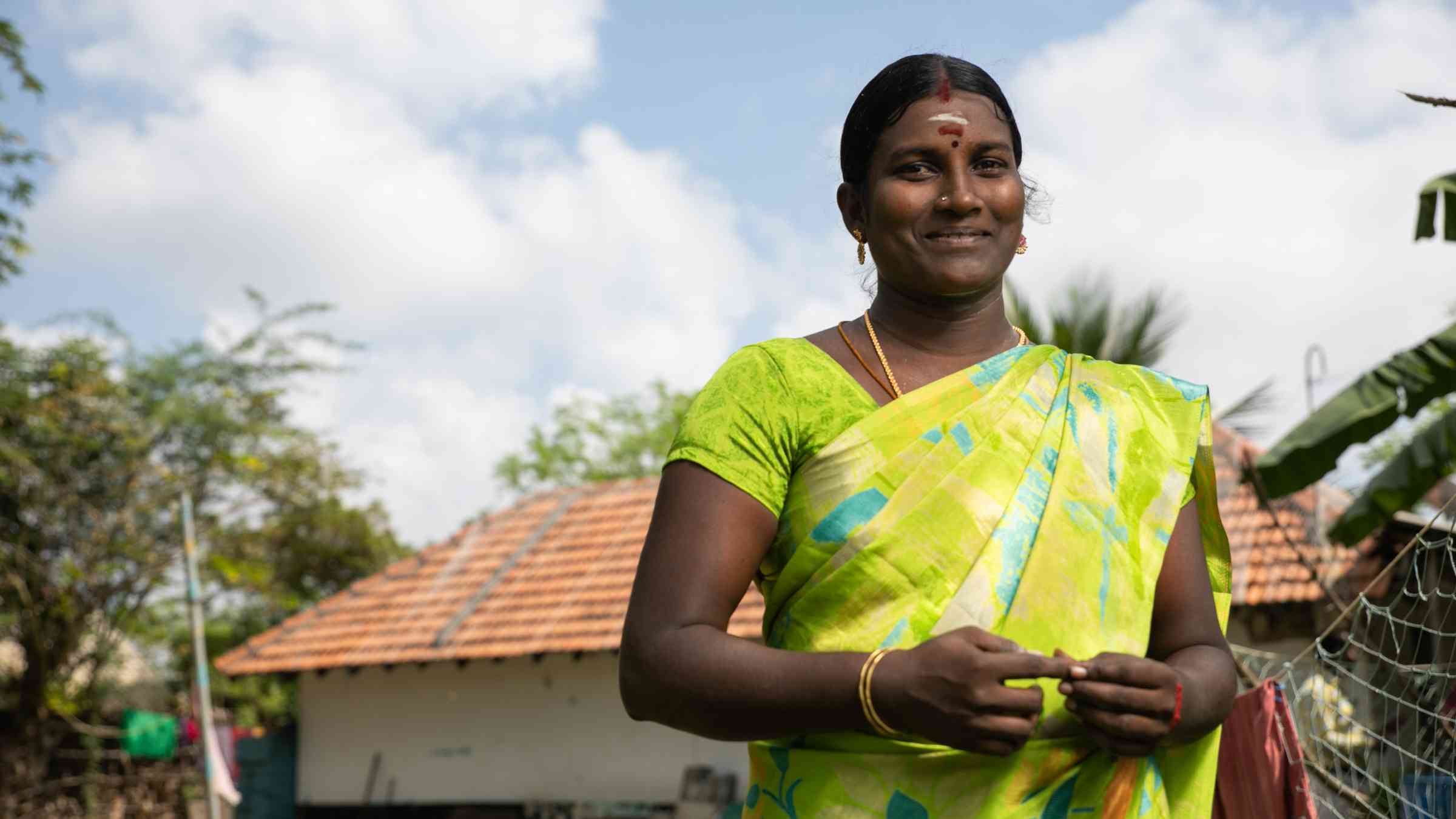Women and the right to resilient housing

Over the past decade, the world has watched as hurricane and typhoon season comes with increasing intensity and devastation. During a particularly deadly span of several months during 2021, broadcasters shared a horrifying vision of families being shattered by the impacts of changing climate patterns, with women and children bearing the brunt of the onslaughts.
Just weeks after a devastating earthquake hit the South of Haiti, killing over a thousand people and destroying tens of thousands of homes, Hurricane Ida left 45 people dead and a million without electricity. Later, Tropical Storm Nora inundated western Mexico with heavy flash floods while Tropical Storm Maring (also known as Typhoon Kompasu) unleashed deadly flooding in the Philippines.
Though these extreme events affect everyone, one group is disproportionally impacted: women.
Data trends show that women have suffered most fatalities in several large disasters, including 61% of deaths in Myanmar after Cyclone Nargis in 2008. It gets worse – over 70% of those killed in the wake the 2004 Indian Ocean Tsunami in Banda Aceh were female. In extreme circumstances, such as Cyclone Gorky in Bangladesh in 1991, 91% of those killed were women, outnumbering men 14 to 1.
Quality housing is key to women’s survival
Socioeconomic status heavily influences the probability of survival: with the main factor being access to quality housing. In fact, when men and women enjoy similar levels of socioeconomic status, mortality rates are equally reduced among both groups.
Roughly half of victims killed by disasters in the late 20th century resided in low development countries, with only 10% of fatalities occurring in high development countries. To understand this imbalance, we need to carefully consider the built environment, including structural and resource constraints of devasted communities.
In the 1991 Bangladesh Cyclone, where women accounted for 91% of fatalities, women in more affluent communities experienced higher survival rates because their homes were made from reinforced concrete and bricks. Conversely, women of lower socioeconomic status experienced lower survival rates as their homes, typically made from bamboo or thatch, were not able to withstand the storm.
Women’s position in society enhances their vulnerability during and after disasters
With less than 40% of women participating in the labor force globally – and 21.7% of women providing full-time, unpaid care to family members – women and children are most often the victims of housing-related fatalities simply because they spend more time at home.
Globally, one billion women remain outside the formal financial system, without access to banking services and, in some cultures, without the right to individually sign for loans. At the same time, women are 24% more likely to have lost their jobs than men in the current pandemic and can expect their income to fall by 50% more than men’s. These problems are further exacerbated by discrimination and inequality in housing: women and girls are more likely to live in insecure, undignified, and unsafe conditions, and are at increased risk of homelessness.
While inadequate housing conditions are a pervasive and global phenomenon, gaps in the demand and supply of affordable housing are exacerbated by earthquakes, hurricanes, and other hazards. Research shows that after a disaster, affordable housing is almost always replaced by more expensive housing developments, leaving many at risk of displacement and housing insecurity. Given housing’s strong relationship to health, financial security, and upward mobility, this represents a significant barrier to gender equality. In any climate-induced crisis, women and girls often face the most significant effects of environmental degradation and disasters ranging from increased poverty to escalations in gender-based violence.
Tailored solutions to climate change and gender equality must focus on housing
While the numbers are shocking, financial and engineering tools can be developed and deployed to change these trends. In fact, housing finance for women is a huge market opportunity for financial institutions worldwide. The International Finance Cooperation has calculated that the estimated market size for women’s housing loans is $23 billion in Colombia, $32.3 billion in India, and $14.8 billion in Kenya alone.
To address the joint crises of climate change and gender inequality, we need finance products that focus on housing; that are tailored to women in their design and marketing; and that are developed with the community to address their most pressing climate risks. The right engineering methods, such as using polypropylene (PP) strapping bands or bamboo for retrofits, coupled with the appropriate financing tools, can be transformational and save the lives of countless women during the next disaster.
A safe environment with dignity, health, mental wellbeing and an overall good quality of life, begins with a house. For millions of families living in substandard shelter, access to finance products and engineering services to make small improvements to their home could mean that they still have a home to return to following a disaster. That home can protect them from the weather and ensure their swift recovery.
We must act now to ensure that homes can truly be safe havens for women and children, instead of yet more potentially deadly hazards. As climate change continues to unleash increasingly violent weather events, the importance of investing in resilient housing for all – and especially for women – is ever more urgent.
 Emma Harwood is a Program Assistant at Miyamoto International where she has contributed work to housing-related studies across several countries and regions. Emma is currently conducting research on the importance of integrating gender into disaster response for Miyamoto International.
Emma Harwood is a Program Assistant at Miyamoto International where she has contributed work to housing-related studies across several countries and regions. Emma is currently conducting research on the importance of integrating gender into disaster response for Miyamoto International.

Olivia Nielsen is an Associate Principal at Miyamoto International where she focuses on resilient housing solutions. She has developed and worked on critical housing programs in over 30 countries. Through her work she hopes to make safe and affordable housing available to all.

Naeem Razwani is the Director of Global Financial Inclusion and Capital Markets at Habitat for Humanity’s Terwilliger Center for Innovation in Shelter. He has been engaged in social and inclusive finance projects in the fields of product development, marketing, investments and advisory services.